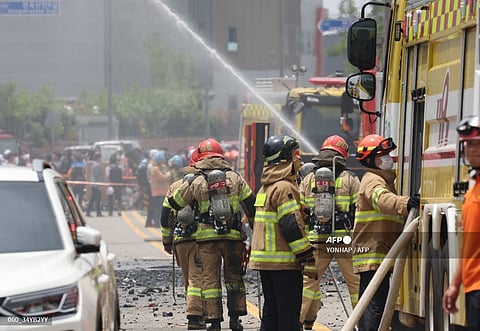
- NEWS
- the EDIT
- COMMENTARY
- BUSINESS
- LIFE
- SHOW
- ACTION
- GLOBAL GOALS
- SNAPS
- DYARYO TIRADA
- MORE

SEOUL, South Korea (AFP) — A deadly fire that tore through a South Korean lithium battery factory in June was due to “gross” safety failures as the company raced to meet production targets, police said Friday.
Twenty-three people were killed at the Aricell lithium battery plant in the massive blaze, most of them are Chinese nationals, in one of the country’s worst factory disasters in years.
Aricell, a primary battery manufacturer, produced batteries for South Korea’s military, but batches of its batteries had failed quality inspections in April — for the first time ever — and it was racing to re-do those orders, plus meet June requirements, police said.
The company was trying to produce 5,000 batteries a day and “started excessive manufacturing,” according to the police.
“Aricell employed a large number of unskilled workers to meet this goal, and as a result, the defect rates rose significantly,” Kim Jong-min at Gyeonggi Nambu Provincial Police Agency told reporters.
Some abnormal batteries that generated heat were found in May, but the company didn’t separately inspect them, instead marking them as fine.
“Without investigating the cause or taking any measures, the accident was caused while the factory was excessively producing batteries,” Kim added.
Police also said that the company did not comply with factory safety laws, including a lack of emergency exits and inadequate safety education for employees who did not speak Korean.
“Because of gross deficiencies, the majority of workers were found on the other side of the emergency exit — even though there were 37 seconds in which they could have evacuated after the initial explosion on June 24,” said Kim.
